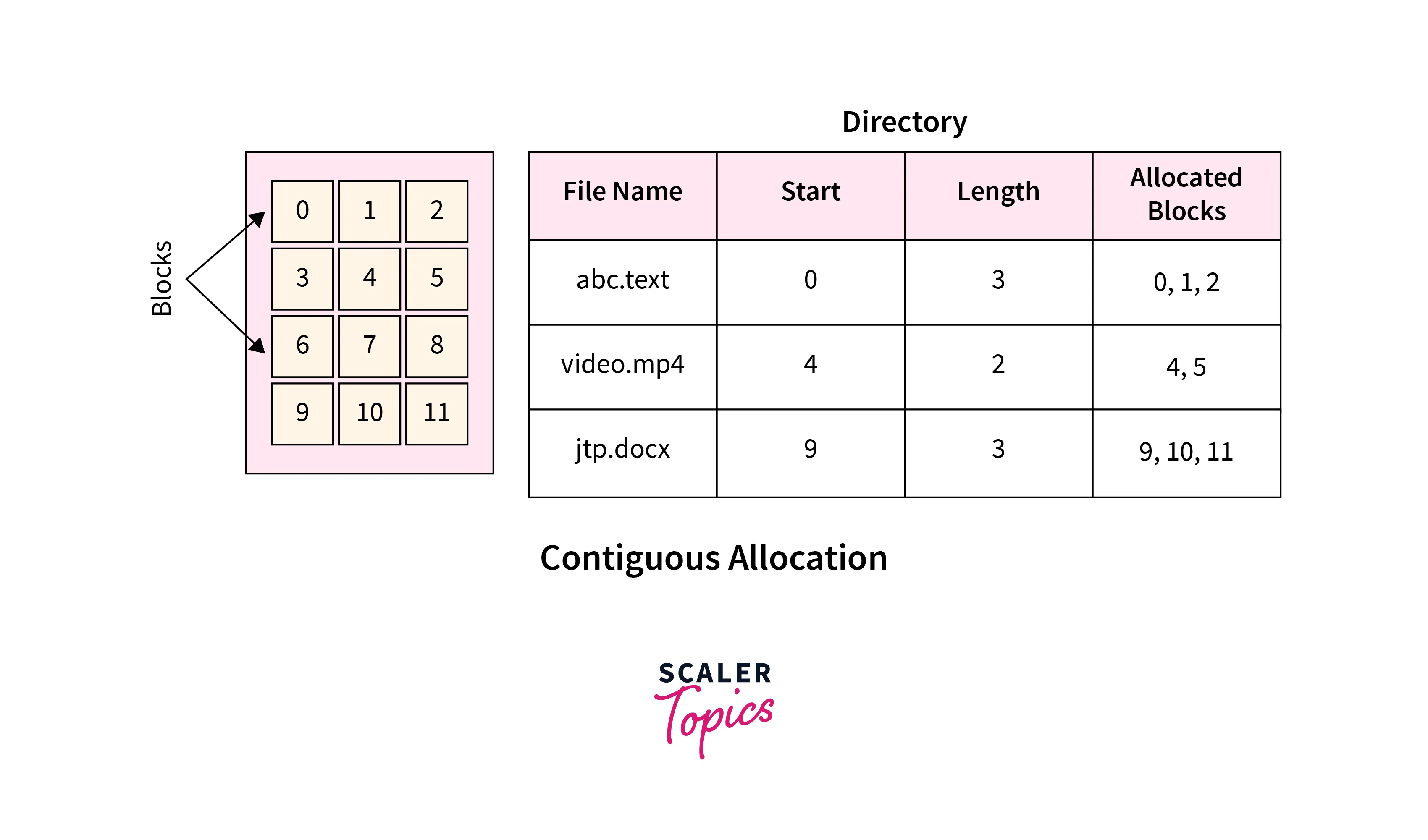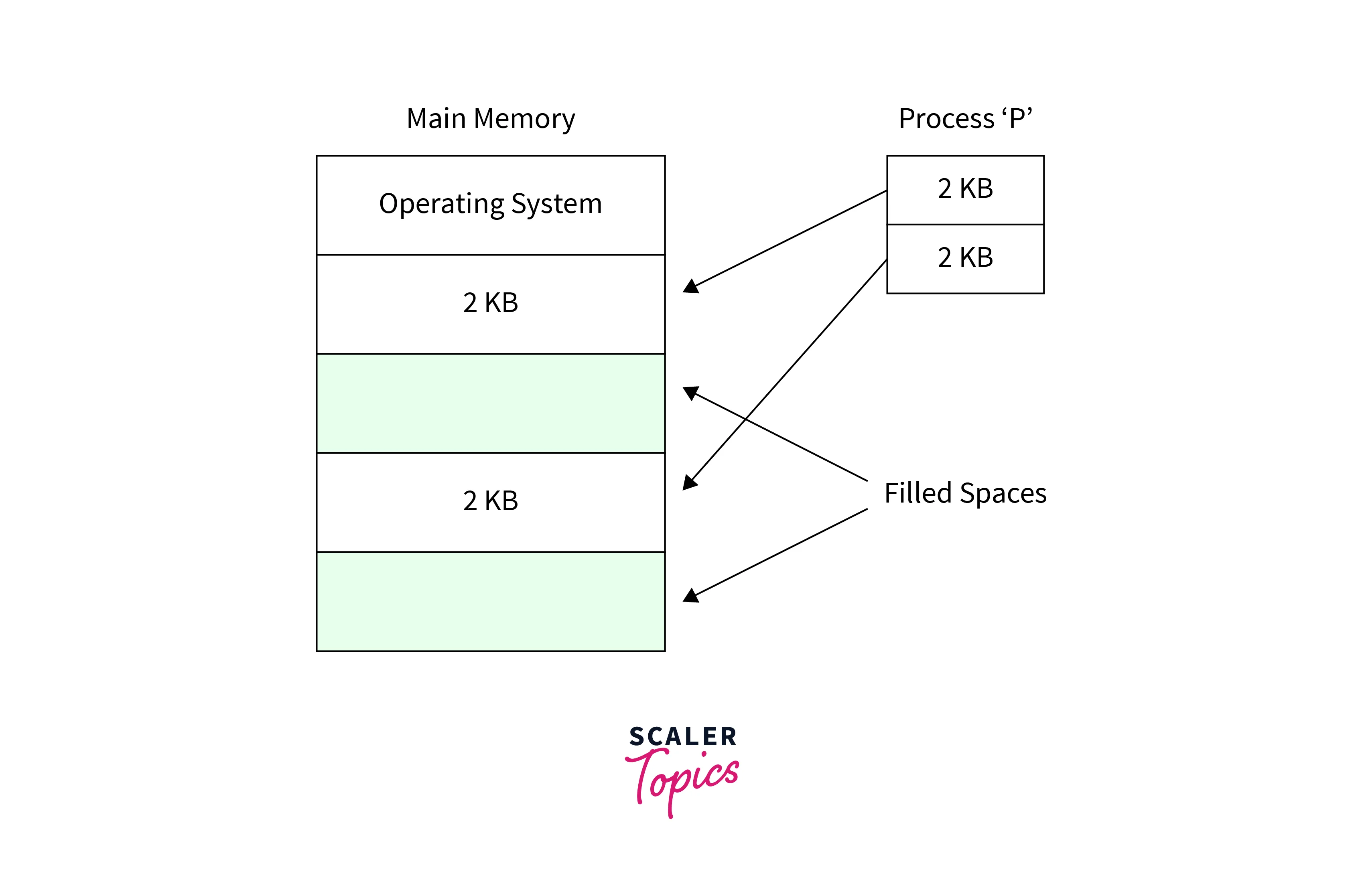Difference Between Contiguous and Non Contiguous Memory Allocation in OS
Overview
There are two types of memory allocation strategy regarding memory management in operating systems: contiguous and non-contiguous memory allocation. The fundamental difference is how they manage memory portions. Contiguous allocation carves out a single memory block to meet a program's request, ensuring that data is arranged in a continuous chunk. Conversely, non-contiguous allocation divides memory into dispersed blocks, allowing for flexible storage but potentially causing fragmentation. Contiguous maintains unity, while non-contiguous allows for flexibility. Both techniques have advantages and disadvantages, highlighting the importance of memory optimization in OS design.
Contiguous Memory Allocation in OS
Contiguous memory allocation is an important topic in operating systems since it plays an important role in memory management. It refers to assigning sequential physical memory blocks to a process or program. This allocation approach allows programs to run smoothly by supplying a continuous memory rather than dispersed chunks.

Consider your computer's memory a collection of adjacent slots comparable to movie theatre seats. Contiguous memory blocks help programs in the same way that they benefit a group of friends sitting together. When a process demands memory, the operating system looks for a free range of slots large enough to support the process. In this manner, the program can access its data without the complexity of navigating various scattered locations.
Some important points regarding contiguous memory allocation are:
- Contiguous memory allocation makes memory addressing easier and improves speed. However, it has its challenges.
- Programs can fragment when loaded and unloaded, leaving small gaps of empty memory between allotted blocks.
- This may restrict the system's capacity to allocate memory to bigger processes.
- Operating systems control this using techniques such as compaction to reorder memory and reduce fragmentation. Furthermore, virtual memory systems isolate physical and logical memory, further optimizing memory use.
- The contiguous memory allocation is analogous to seating friends in a theatre for a more enjoyable experience. Similarly, it allocates memory blocks in operating systems for fast and simplified program execution, eventually leading to a well-organized and responsive computer environment.
To learn more about the contiguous memory allocation in OS, click here.
Non-Contiguous Memory Allocation in OS
Memory allocation is critical in the domain of operating systems for guaranteeing optimal use of a computer's memory resources. "Non-Contiguous Memory Allocation" is an unusual technique for memory allocation. In contrast to typical contiguous allocation, which places processes in consecutive blocks, this approach permits processes to be stored in dispersed or non-adjacent memory regions.

Some important points regarding contiguous memory allocation is:
- Non-contiguous memory allocation becomes critical when dealing with variable memory needs and fragmentation problems.
- When processes are continuously assigned memory, it can result in either exterior fragmentation, in which free memory segments are spread, or internal fragmentation, which occurs when allotted memory is bigger than necessary.
- The operating system uses data structures such as linked lists or tables to keep track of available memory blocks in non-contiguous allocation.
- When a process requests memory, the system looks for appropriate memory gaps, ensuring that the scattered allocations fit together to satisfy the desired memory size.
- One significant advantage of this technique is its potential to reduce external fragmentation. However, controlling distributed memory locations necessitates more complex memory management strategies, which may influence system performance.
- The non-contiguous memory allocation provides a flexible solution to memory allocation problems, especially in dynamic computing settings. This strategy optimizes memory utilization and aids in the smooth operation of current operating systems by intelligently managing distributed memory areas.
Difference Between Contiguous and Non-Contiguous Memory Allocation in OS
Let us now look at the difference between Contiguous and Non-Contiguous memory allocation in OS
| Aspect | Contiguous Memory Allocation | Non-Contiguous Memory Allocation |
|---|---|---|
| Memory Layout | Allotted blocks are sequentially adjacent. | Alloted blocks can be scattered throughout the memory space. |
| Fragmentation | External fragmentation may occur owing to changing block sizes. | Reduces external fragmentation as blocks can be fitted in available gaps. |
| Allocation Efficiency | Simple block allocation makes memory allocation typically faster. | Allocation might be slower due to searching for available gaps and managing complex data structures. |
| Compaction | Not required as contiguous blocks are inherently compacted. | Sometimes, it requires compaction to minimize fragmentation and optimize memory usage. |
| Memory Access | Relatively faster memory access due to contiguous addresses. | Access can be slower due to scattered memory addresses and potential page faults. |
| Usage Scenarios | Suited for systems with fixed memory requirements, like simple embedded systems. | Common in systems with dynamic memory needs, such as modern operating systems. |
| Memory Reclamation | Reclaiming memory can be more challenging due to fragmentation. | Memory reclamation can be more efficient as isolated blocks are easier to manage. |
FAQs
Q: What are FAQs?
A: FAQs are a compilation of frequently asked questions and their brief answers to provide quick solutions to common difficulties.
Q: What is the significance of FAQs?
A: FAQs simplify information by efficiently answering recurrent questions. They improve the user experience and decrease the need for direct assistance.
Q: How should I organize my FAQs?
A: Arrange FAQs logically, with the most important and relevant queries at the top. Use clear headers and concise, jargon-free responses.
Q: Can FAQs evolve?
A: Yes, Keep FAQs up to date as technology and user demands evolve. Regular assessment assures correctness and ongoing utility.
Conclusion
- Contiguous memory allocation organizes processes into blocks that are contiguous to one another. In contrast, non-contiguous spreads operations over memory, resulting in fragmentation.
- External fragmentation, in which gaps emerge between allotted blocks, might affect contiguous allocation. Non-contiguous approaches, such as paging, aid with this by dividing memory into fixed-size pages.
- Non-contiguous approaches are more adaptable. Virtual Memory employs demand paging, loading the required parts, whereas contiguous allocation necessitates continuous memory space.
- The linear organization of contiguous allocation speeds up memory access. Due to dispersed data, non-contiguous might induce minor delays.
- Contiguous allocation makes memory management easier. Non-contiguous refers to using complicated data structures to monitor fragmented memory chunks.
- Contiguous is appropriate for bigger tasks that require sequential memory. Non-contiguous is appropriate for processes of varying sizes, optimizing memory use.
